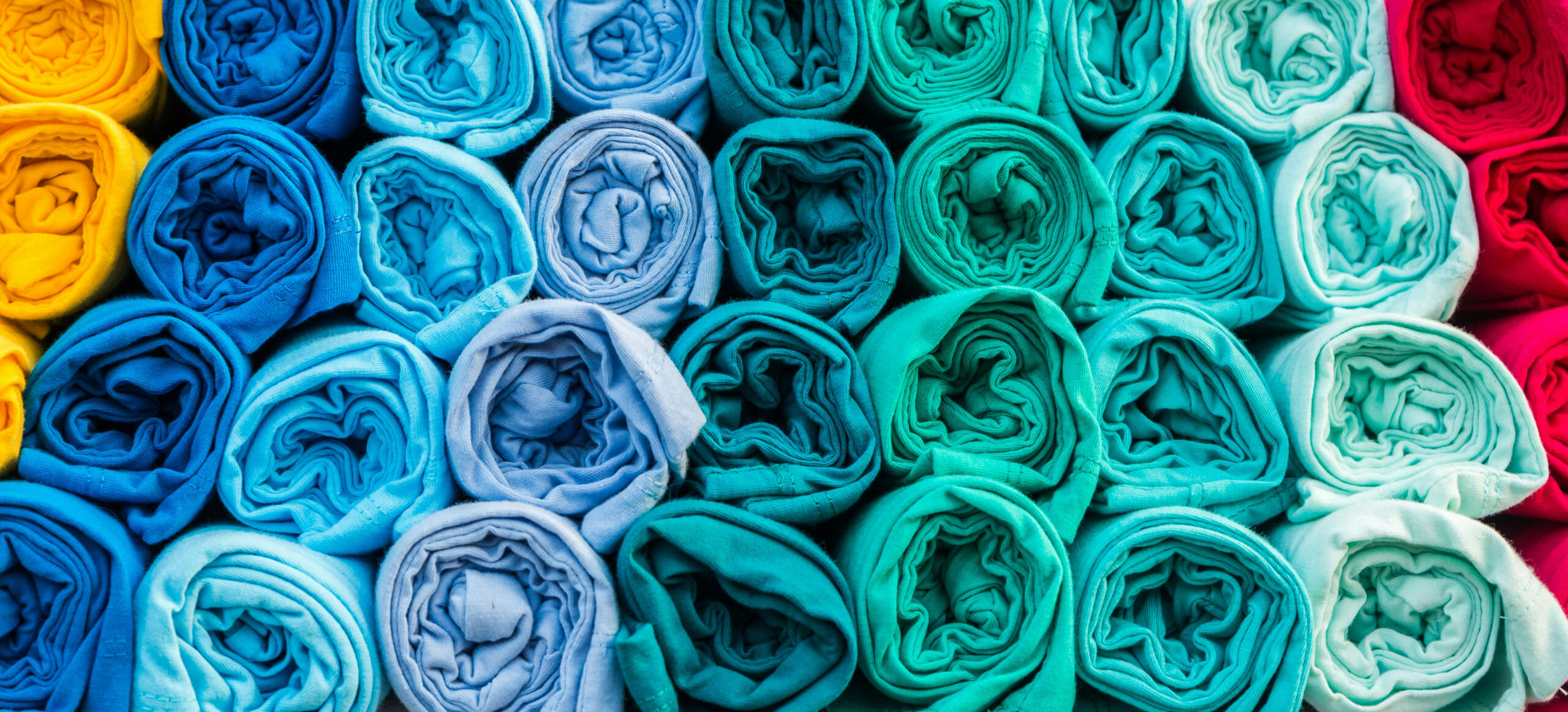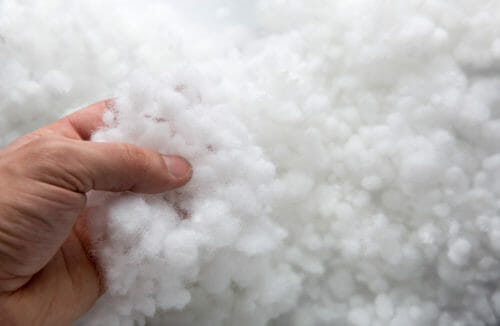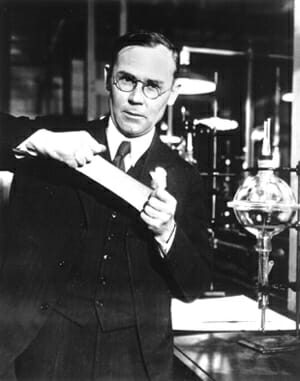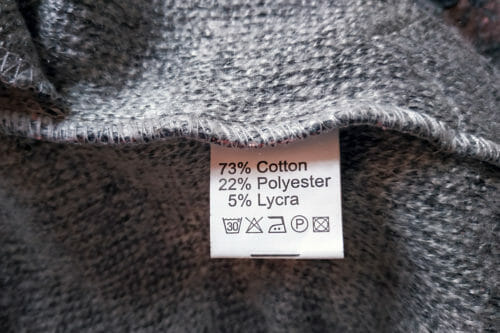
This will probably be the shortest article so far in the history of — series. Polyester fabric is so new in comparison to the natural fibers that we have been using for millennia. Regardless, polyester has made a massive impact on the modern textile industry and is well worth discussing. So let's get up to date on The History Of Polyester
What Is Polyester?
Polyester is a category of a certain type of plastic formed from a chemical reaction between an acid and an alcohol. The polyester we use in fabrics most commonly refers to polyethylene terephthalate (PET or PETE).
PET is a thermoplastic, which means that it melts and is malleable at a certain temperature (about 250c or 480f) and solidifies when it cools. It is this property that makes thermoplastics so versatile in their usage.
More than 60% of the production of PET is for synthetic fibers, with the rest mostly taken up with bottle production. Polyester is the fourth most produced polymer in the world (a polymer simply is a large molecule composed of many repeating parts, from Greek; poly-‘many', mer-‘parts').


What Is Polyester Used For
Polyester, as we all know, is often used for clothing, nowadays it's more common to find blended cotton and polyester than full polyester. The main reason for this is the lack of breathability in pure polyester, and frankly few people like the look now. Blended fabrics also retain many of the benefits of polyester; being more resistant to wrinkling, having more stretch, and sometimes more resistant to wear.
Outside of fashion, polyester is used for a great variety of products; the most common being plastic bottles and containers. Some others include sailcloth, canoes, tarpaulin, LCDs, insulating tapes, various items for film, ropes, cord, and more. Polyester is also commonly used as a finish to high-quality wood products like pianos, guitars, and vehicle interiors (which is then polished to a glossy, durable finish).


The Short History Of Polyester Fabric
In 1926, Wallace Carothers, the inventor of nylon, first discovered that alcohol and carboxyl acids could be mixed to create synthetic fibers. This resulted in the first early polyester polymers, however, they proved to be unstable and lost shape when submerged in hot water. The project was then shelved in favor of developing nylon.


Thirteen years later, in 1939, John Winfield and James Dickson continued Carother’s work. By 1941 they patented PET which would become the basis for synthetic fiber products. In the same year with the help of W.K. Birtwhistle and C.G. Ritchie, they created the first polyester fiber, Terylene.
By 1946, American conglomerate DuPont purchased all of the legal rights to the material. In 1950, they produced the polyester fiber – Dacron, and in 1952 – Mylar. In 1951 polyester was first introduced to the public, it was sold as a ‘miracle fabric' that could be pulled, worn, and washed without wrinkling or signs of wear.


By 1958 polyester was experiencing fervent popularity, people did seem to like the low-maintenance benefit. Textile mills exploded around the country as many were eager to reap the benefits of producing this inexpensive yet durable fiber. This popularity would continue through the early '60s.
As 1970 came and went, polyester was met with a decline in the fashion world. It developed a bad reputation as a cheap fabric that was uncomfortable to wear (especially in the heat). Both high and low fashion made a swift return to natural fibers like wool, linen, and cotton (and polyester blends).
Today full polyester clothing mostly retains its ill reputation. But cotton-polyester and wool-polyester blends are quite common. Now they take more of an assisting role to the natural fibers, giving them extra durability among its other benefits, for little cost.


What Is The Future Of Polyester Fabric
Polyester is not going anywhere. There are simply too many cost-effective benefits it can bring to clothing, and with our modern blending techniques, they can look very good.


Will we see a return to full polyester outfits? I strongly doubt that. Polyester has found a solid space in the fabrics industry, and I don't think much change is likely, barring some new technology that could make a better alternative.
I hope you enjoyed this History Of Polyester, let me know what you think in the comments below. And feel free to share any requests as well.
If these sorts of history articles interest you, please check out the last history article: The History Of Linen
As well as A Super Quick History of Cotton.








Good outline of the history of polyester, yet no commentary on the environmental effects of polyester garments
Indeed That is so vast that will require another article, but you can count on it.
I remember polyester fabrics – crimplene anyone?
Can you explain what viscose and tercel are please? They are also massively uncomfortable in the heat but seem to be very popular in larger sized clothing…
Hi Linda, you may be interested in this article about viscose: https://so-sew-easy.com/sewing-viscose-rayon/
very nice history
I really miss being able to find fabrics without polyester (plastic) blended into it. 100% natural fibers are harder & harder to find. These blends may bring the benefits of durability or stretch ability or non wrinkling but it takes very little added polyester to ruin the feel & breathability of a natural fiber. It really ruins a good thing.
Say what you want… I miss crimplene …. easy to sew and looked great. And when it didn’t we burnt it.
As a person who lived through the polyester phase of fashion (my mom wore polyester pant suits), I’m often surprised at how much polyester is still in clothes today. Yes, it still doesn’t breath and it still gets stinky really quickly.
Good article. I have always had ‘smelly’ issues using polyester clothing. Right now I am learning just how much smell is retained in the blended fabrics because we had a very smoky fire. Some things were dried right after washing and retained a terrible smell; others were washed twice before drying. They are somewhat better. Thanks for the history lesson, I always like to learn!
I am glad that polyester is waining in popularity in the textile market. It is a heinous product that does not decompose and is extremely harmful to the environment. Sewists, DON’T BUY IT!
I would like to see more hemp in the sewing industry. Its such a versatile plant and has many uses including textiles. Its a very durable product and fast growing and does not require lots of water to grow like cotton does. I have just started sitting down and watching youtube to find out more about what fabrics are best for sewing garments woven and stretch. eg when picking a pattern to make a garment and on the back of the packet what fabric to use and cause it will be suitable for a particular fabric to use for that pattern. Its a confusing time to be overwhelmed with looking at so many fabrics when you go into a store and picking the right one etc. Love the article about Polyester its interesting to know these things about all the different fabrics that you can buy now!
I disagree that 100% polyester garments are rare, in cheap stores particularly for teenagers, it is difficult to find natural fibres. You also should have talked about the environment. Even if you have another article. The future of polyester is dependent on it’s environmental impact.
I like learning about fabric.
Thank you, very interesting! and reduces the use of water thirsty cotton which is good for the planet.
I think you cleverly left out the part that the oil industry played in the production of these fibers. Polyester does not decompose. I hope there is a lot less polyester & other plastics in the world soon. It makes me sad that you have not declared nor accepted the vile mess we have made of this planet with plastics.
Hi Emily, thanks for your thoughts. Sounds like you might like this article as well: https://so-sew-easy.com/sustainable-sewing-how-your-hobby-saves-planet/
I think you missed a chance to discuss the impact of polyester on the environment.
Can it be recycled?
Is it responsible for micro plastics, eg in the oceans?
Should we not all be trying to wear clothes made from natural fibres?
Hi Rosemary, thanks for your feedback. You might like this article as well: https://so-sew-easy.com/eco-friendly-fabric/
I love a blend of poly and cotton because it makes ironing almost unnecessary or very limited. Hate the addition of lycra which makes the clothing hotter than the polyester. 100% cotton is awful. Shrinks,looks messy and wrinkled after wearing for a short time. The addition of polyester makes a world of difference.
The production of polyester may HAVE to end. The plastic breaks down and pollutes not only our waterways, but our air as well.
It’s also in our bodies. We really need to boycott polyester fabrics. It could be our contribution to cleaning the earth of this poison.
This is so interesting. Thank you for the lesson!
Thank you for the interesting information!
Cheap 100% poly clothing is actually very popular. Fleece? And much active wear has poly with just a little Lycra. And brushed poly only has a little Lycra. I don’t like most of the new active wear for this reason. I overheat. Nylon is a little better. Wicking fabrics only work for people who sweat enough, yknow? And they they hold stink. Yuck.
Thanks for this article. I never knew how it was made. I’ve lived through this era and I’m so glad polyester is mostly blended now. I still have some of the fabric in the back of my closet. I’m just too thrifty to toss it out! All stitched together though, it might make a very, pretty sail for a boat!?
Thanks for the explanation. Did not remember all the details.
I thoroughly enjoy these articles on the development of various fibers. Please keep them coming!
Thank you love these articles.
Merci for the history for this fibre and other products. I loved it.
This ingenious man gave us new products from his discoveries.
I even went to wikipedia and found the sad story of his death
Thank you again for fabric history I love knowing:who-where and how things are made.
Merci
Yolande
Loved the Polyester article. Do you have a PDF or word document showing all the types of fabrics used in sewing garments and what ones are best used for what type of clothing? If so, please email to me. Thank you so much in advance. Biscuit